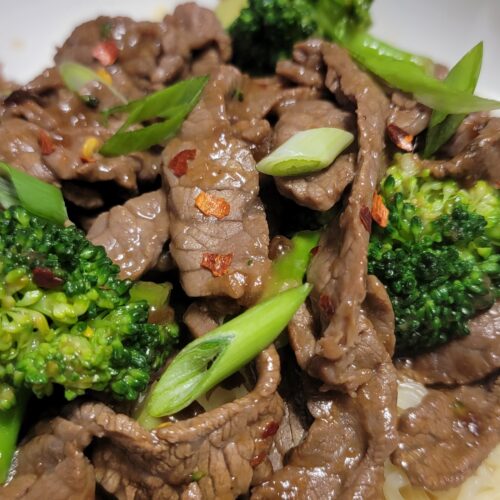Beef and broccoli – a timeless classic that marries the savory depth of beef with the fresh, green crunch of broccoli. This dish, a staple in Chinese-American cuisine, has won hearts globally with its simple yet profoundly satisfying flavors. Whether you’re a seasoned chef or a cooking novice, mastering the art of beef and broccoli can elevate your culinary game and introduce a go-to recipe into your repertoire.
Choosing the Right Ingredients for Easy Beef and Broccoli
Selecting Quality Beef
The journey to a succulent beef and broccoli dish begins with choosing the right beef. Opt for cuts like flank steak, sirloin, or tenderloin for the best results. These cuts offer a tender texture after cooking, making every bite melt in your mouth.
Fresh vs. Frozen Broccoli
While fresh broccoli is preferred for its natural sweetness and crunch, frozen broccoli can also be a convenient and nutritious alternative. More importantly, the key is ensuring the broccoli is not overcooked to maintain its vibrant color and crisp texture.
Essential Sauces and Seasonings
A blend of soy sauce, oyster sauce, garlic, and ginger forms the backbone of this dish’s flavor. Good, quality ingredients make a difference, so choose them wisely to enhance the depth and authenticity of your beef and broccoli.
Preparation Techniques
Marinating Beef for Tenderness
Marinating the beef in a mixture of soy sauce, cornstarch, and a touch of oil not only flavors the meat but also tenderizes it, ensuring a tender chew in every bite.
Blanching Broccoli for the Perfect Crunch
Blanching broccoli in boiling water for a brief period, then shocking it in ice water, preserves its bright green color and crisp texture, a crucial component of this dish.
Cooking Methods Explored
Stir-Frying for Quick Meals
Stir-frying is the quintessential method for beef and broccoli, offering a quick and easy way to achieve a flavorful, evenly cooked meal. High heat and constant stirring are key.
Slow Cooking for Depth of Flavor
For those seeking depth and melding of flavors, slow cooking is an excellent alternative. Though not traditional, it allows the beef to become exceptionally tender, soaking up the sauce’s rich flavors.
Beef and Broccoli Variations
Spicy Beef and Broccoli
Introduce a kick to your dish with a dash of chili flakes or a spoonful of chili paste. Adjust the heat level to suit your preference for a spicy twist on the classic. I love topping mine with siracha and this is the brand I use.
Low-Carb Beef and Broccoli
Substitute the traditional sauce ingredients with low-sugar alternatives and serve over cauliflower rice for a low-carb version of this beloved dish.
Serving Suggestions
Pairing with Rice and Noodles
Serve beef and broccoli over a bed of steamed rice or tender noodles for a fulfilling meal. These bases absorb the sauce beautifully, making each bite a perfect blend of flavors.
Storing and Reheating Tips
Best Practices for Leftovers
Store leftovers in an airtight container in the refrigerator. Reheat gently on the stove or in the microwave, adding a splash of water or broth to revitalize the sauce.
Health Considerations
Low-Carb Serving Options
For a low-carb alternative, pair the dish with cauliflower rice or zucchini noodles, maintaining the dish’s essence while catering to dietary preferences.
Dietary Adjustments for Health
For sodium-sensitive individuals, low-sodium soy sauce may be a suitable alternative. Additionally, the dish can be adapted to gluten-free diets by using tamari instead of traditional soy sauce.
Allergen Information
Be mindful of allergies to soy, wheat, and sesame. Substitutions are available to accommodate these dietary restrictions.
Easy Beef and Broccoli in Different Cuisines
Chinese-American Influence
This dish exemplifies the fusion of Chinese cooking techniques along with American tastes, helps to create a unique and beloved recipe that has become a staple in Chinese-American cuisine.
Try some variations of beef and broccoli by incorporating ingredients and spices from your favorite dishes. Try some Thai basil, Japanese teriyaki sauce, or a different variety of Sriracha sauce.
Cooking Tips from the Pros
Achieving the Perfect Stir-Fry
High heat, a well-seasoned wok or deep nonstick skillet, and quick, constant stirring are essential for a successful stir-fry. This technique ensures even cooking and a flavorful result.
Common Mistakes to Avoid
Overcooking the broccoli or overcrowding the pan can lead to soggy vegetables and unevenly cooked beef. Timing and space are crucial for the perfect stir-fry.
Easy Beef and Broccoli
Follow our ultimate beef and broccoli recipe to bring this classic dish to life in your kitchen. However, with the right ingredients, preparation, and cooking techniques, you’ll create a meal that’s both nourishing and delicious.
FAQs
What are the best cuts of beef for beef and broccoli?
- Flank Steak: This is a popular choice for many Asian dishes, including Beef and Broccoli. Flank steak is lean, flavorful, and slices beautifully against the grain, making it tender after a quick sear. Its robust beefy flavor stands up well to the bold sauces commonly used in Asian cooking.
- Sirloin: Top sirloin cuts are tender, juicy, and packed with flavor. They are versatile and perform well under high-heat cooking methods like stir-frying. So, when thinly sliced, sirloin cooks quickly and absorbs the sauce nicely, complementing the broccoli and other ingredients.
- Ribeye: While a more premium option, ribeye steak offers marbling that contributes to its rich flavor and tenderness. When used in a dish like Beef and Broccoli, it adds a luxurious touch. The fat renders down and flavors the dish beautifully, but it’s important to slice it thin to ensure it cooks quickly and evenly.
- Tenderloin: For an ultra-tender option, tenderloin is unbeatable. It’s the most tender cut of beef, although it’s less flavorful than some other cuts. Tenderloin works well in Beef and Broccoli when you want the meat to be exceptionally soft without requiring long cooking times.
- Chuck Steak: While chuck steak is typically used for slow-cooked dishes, it can be an excellent choice for Beef and Broccoli if marinated and sliced thinly. This approach can tenderize the meat, making it suitable for quick cooking. It’s a more economical option and can be very flavorful.
- Skirt Steak: Similar to flank steak, skirt steak offers a rich, beefy flavor and tender texture when sliced against the grain. It’s slightly tougher than flank but can be made tender with proper marinating and quick cooking. Skirt steak soaks up marinades well, enhancing the dish’s flavor profile.
For best results in your Beef and Broccoli dish:
- Slice the beef thinly against the grain. This breaks up the muscle fibers and makes the beef more tender.
- Marinate the beef. Even a brief marination can tenderize the meat and infuse it with flavor. Ingredients like soy sauce, ginger, and garlic are not only traditional but help to tenderize the meat.
- Cook quickly over high heat. Stir-frying or searing over high heat locks in flavors and ensures the beef stays tender and juicy.
All in all, Choosing the right cut and preparing it correctly can transform your Beef and Broccoli into a dish that’s both authentically Asian and incredibly delicious. Each cut has its own strengths, so consider what’s most important to you—flavor, tenderness, cooking time, or budget—to make the best choice for your dish.
Can I use other vegetables instead of broccoli?
Absolutely! While traditional Beef and Broccoli is a classic combination in both Chinese-American and broader Asian cuisine, the beauty of cooking is in its versatility and adaptability to personal tastes and available ingredients. Substituting broccoli with other vegetables can refresh this dish, making it suitable for different dietary preferences or simply to enjoy a variation. Here are some excellent alternatives to broccoli that pair wonderfully with beef in this stir-fry style dish:
- Bell Peppers: Adding a sweet and colorful touch, bell peppers—red, yellow, or green—cut into strips, can brighten the dish and complement the beef’s savory flavor.
- Snow Peas: Crisp and lightly sweet, snow peas offer a delightful crunch and a fresh contrast to the rich beef. They cook quickly, making them a perfect addition to a fast-paced stir-fry.
- Bok Choy: This leafy green is a staple in Asian cooking. Bok Choy, with its tender leaves and slightly crunchy stems, brings a mild, earthy flavor to the dish and goes well with the savory beef.
- Asparagus: Sliced asparagus spears can introduce a sophisticated, slightly bitter note that pairs beautifully with the richness of the beef, adding both texture and a vibrant green color to the dish.
- Green Beans: Green beans are another fantastic option, offering a satisfying crunch and a sweet, earthy flavor that meshes well with the savory components of the sauce used in Beef and Broccoli.
- Mushrooms: For a more umami-forward twist, different types of mushrooms, such as shiitake, button, or cremini, can be used. They add depth and richness to the dish, making it even more flavorful.
- Zucchini: Zucchini or other summer squash varieties, sliced or cut into bite-sized pieces, can lighten the dish, offering a soft texture and a mild, slightly sweet flavor that absorbs the sauce beautifully.
When substituting vegetables, consider their cooking times to ensure they are perfectly tender-crisp when the dish is complete. Some vegetables, like bell peppers and snow peas, cook quickly and can be added towards the end of the cooking process. Others, such as carrots or asparagus, might need a bit more time to soften and could be added earlier.
Remember, the key to a successful stir-fry is high heat and quick cooking, so have all your ingredients prepped and ready to go before you start cooking. This way, you can easily experiment with different vegetables and find your favorite combinations for this adaptable and always delicious dish.
What can I do if my beef and broccoli is too salty?
- Add More Ingredients: The simplest way to dilute the saltiness is to increase the volume of the dish without adding more salt. You can do this by adding more of the main ingredients—beef and broccoli. If the sauce is already too salty, prepare additional beef and broccoli without seasoning them with salt, then combine them with the original batch to spread the saltiness across a larger volume of food.
- Bulk Up the Sauce with Unsalted Stock or Water: If the dish is saucy and the sauce is too salty, try thinning it out with a bit of unsalted stock or water. Add a little at a time, tasting as you go, until the desired balance is achieved. This can help mellow out the saltiness without significantly altering the dish’s flavor profile.
- Add a Starch: Incorporating a starch like cooked rice, noodles, or even a small amount of cornstarch mixed with water can help absorb some of the salt. If you opt for cornstarch, add the slurry to the dish and bring it to a simmer. The sauce will thicken and the saltiness can be reduced.
- Use Acid or Sweetness to Balance: Adding a splash of vinegar (like rice vinegar or apple cider vinegar) or a sweet element (such as sugar, honey, or a sweet sauce) can help counteract the saltiness. These flavors don’t reduce the salt but can help balance the overall taste of the dish.
- Incorporate Creamy Elements: If the dish’s flavor profile allows, adding a creamy element such as coconut milk or a dollop of yogurt can help mellow out the saltiness. This works well in dishes that can take on a slightly creamy texture without deviating too much from the expected flavor.
- Serve with a Neutral Side: Another way to counterbalance the salty main dish is to serve it with something bland or neutral, such as plain rice, boiled potatoes, or steamed vegetables. These sides can absorb some of the excess salt and make the dish more palatable.
- Dilute with More Liquid Ingredients: For soupy or stew-like versions of Beef and Broccoli, adding more liquid (such as water, unsalted broth, or even coconut milk) can help dilute the saltiness. Just be sure to adjust the seasoning accordingly to ensure the dish doesn’t become too bland.
- Lemon Juice or Vinegar: A bit of acidity can cut through the saltiness and add a new dimension to the dish. Lemon juice or mild vinegar can brighten up the flavors without needing to significantly alter the recipe.
If you find yourself frequently encountering dishes that are too salty, consider tasting as you go and being more conservative with your salt usage. You can always add more, but it’s much harder to correct over-salting. Remember, these fixes can help mitigate the issue, but the best results often come from balancing flavors during the cooking process itself.
Conclusion
Beef and broccoli is more than a quick meal; it’s simply good food. Check out my other recipes for new ideas.
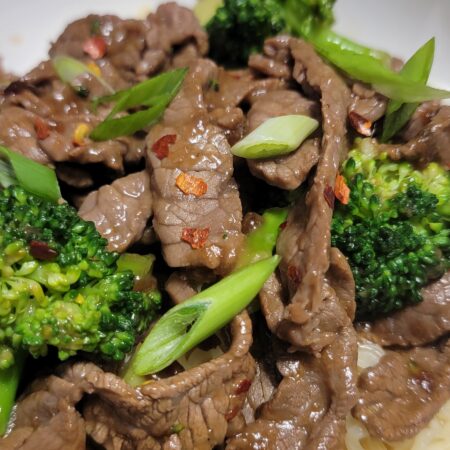
Easy Beef and Broccoli
Ingredients
- 1 ½ lbs round steak thinly sliced against the grain flank, skirt or another thinly sliced steak works
- 2 + tbsp vegetable or canola oil
- 2 pounds of broccoli florets blanched
- 1 tbsp sesame seeds for serving
Marinade
- 2 tbsp brown sugar
- 8 tbsp soy sauce low sodium works great
- 2 tsp cornstarch
- 2 tsp lemon juice fresh is always ideal, but don't be afraid to use bottled juice
Sauce
- 2 tsp grated ginger
- 6 cloves of grated garlic
- ⅓ cup beef broth
- 2 tsp brown sugar
- ½ cup soy sauce
- 2 tbsp cornstarch
- 2 tbsp sesame oil
- 1/8 tsp salt
- 1/4 tsp pepper
Instructions
- Slice steak thinly to about ⅛-¼ inch thick strips. The thinner it is, the quicker it will cook and sear.
- In a medium mixing bowl, whisk the brown sugar, soy sauce, cornstarch, and lemon juice until smooth.
- Add the marinade and steak to a gallon zipper bag. Let marinade for a minimum of 30 minutes.
- Steam or Blanch the broccoli for about 3 minutes, until it turns bright green and is softening but still has a bite.
- Sautee the broccoli in a couple tablespoons of canola oil for about 3-4 minutes. Just enough time to slightly brown the broccoli, stirring frequently. Set aside.
- In a medium mixing bowl, whisk the sauce ingredients until smooth.
- Add 2 more tbsp of canola oil to the same skillet used to sautee the broccoli on medium-high. Sautee the beef in several batches, allowing for a single layer. Transfer each batch to a plate and set aside.
- Reduce the heat to medium and cook the sauce for 3-5 minutes until it thickens.
- Transfer the beef and broccoli to the pan and cook for 3 minutes, until everything is coated in the sauce and everything has heated through.
- Top with sesame seeds and siracha, serve immediately.
- Serve over Ramen or rice.


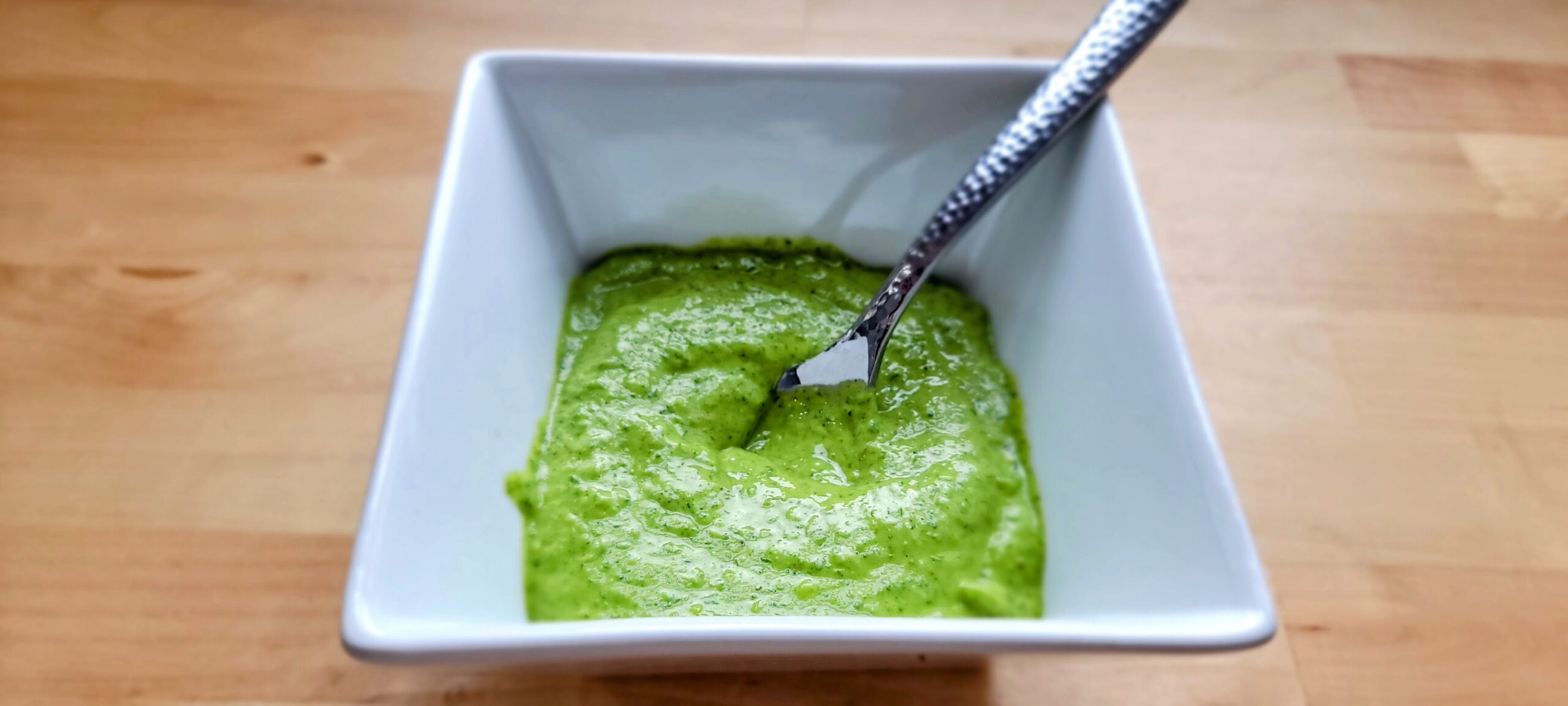

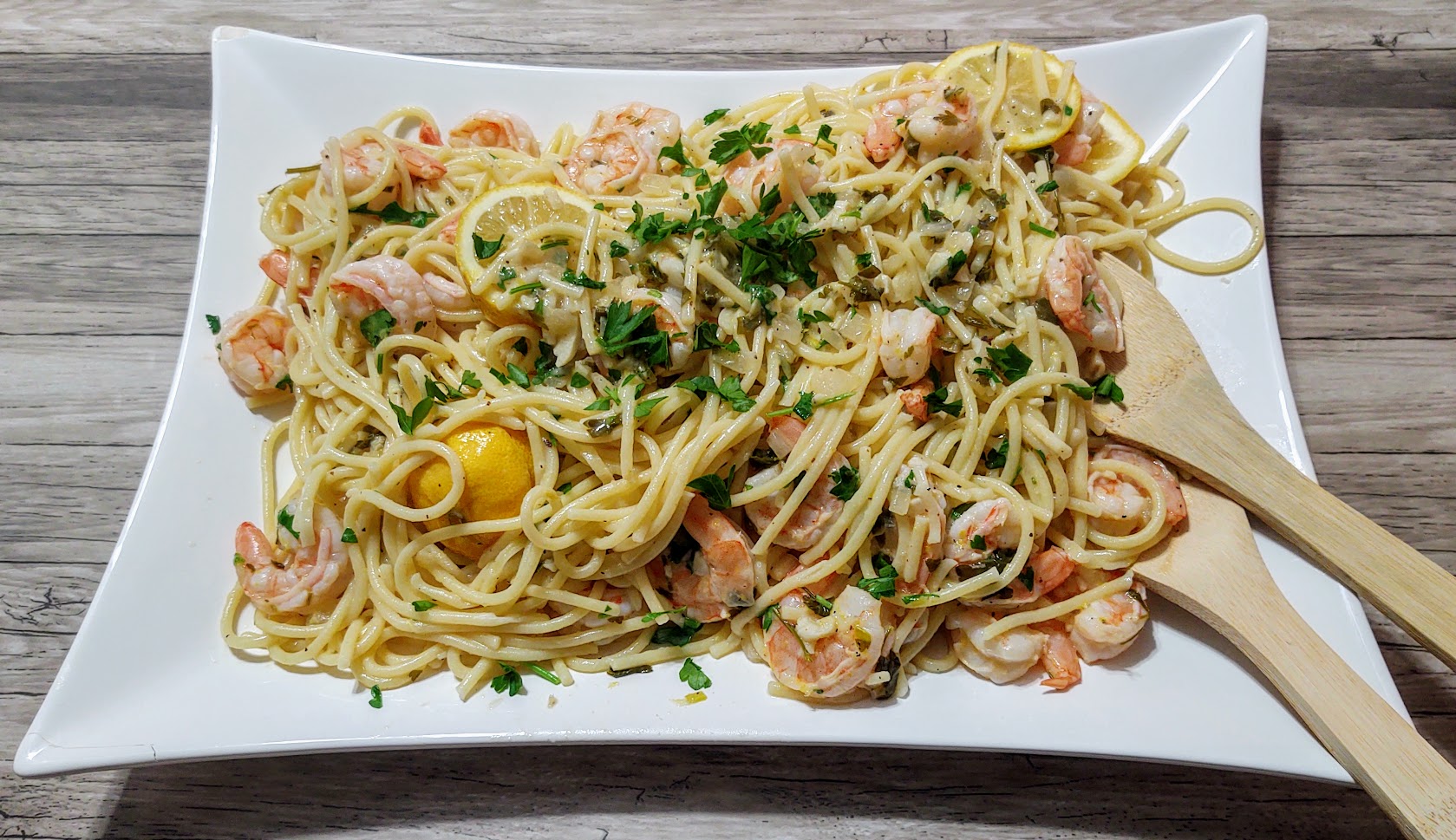




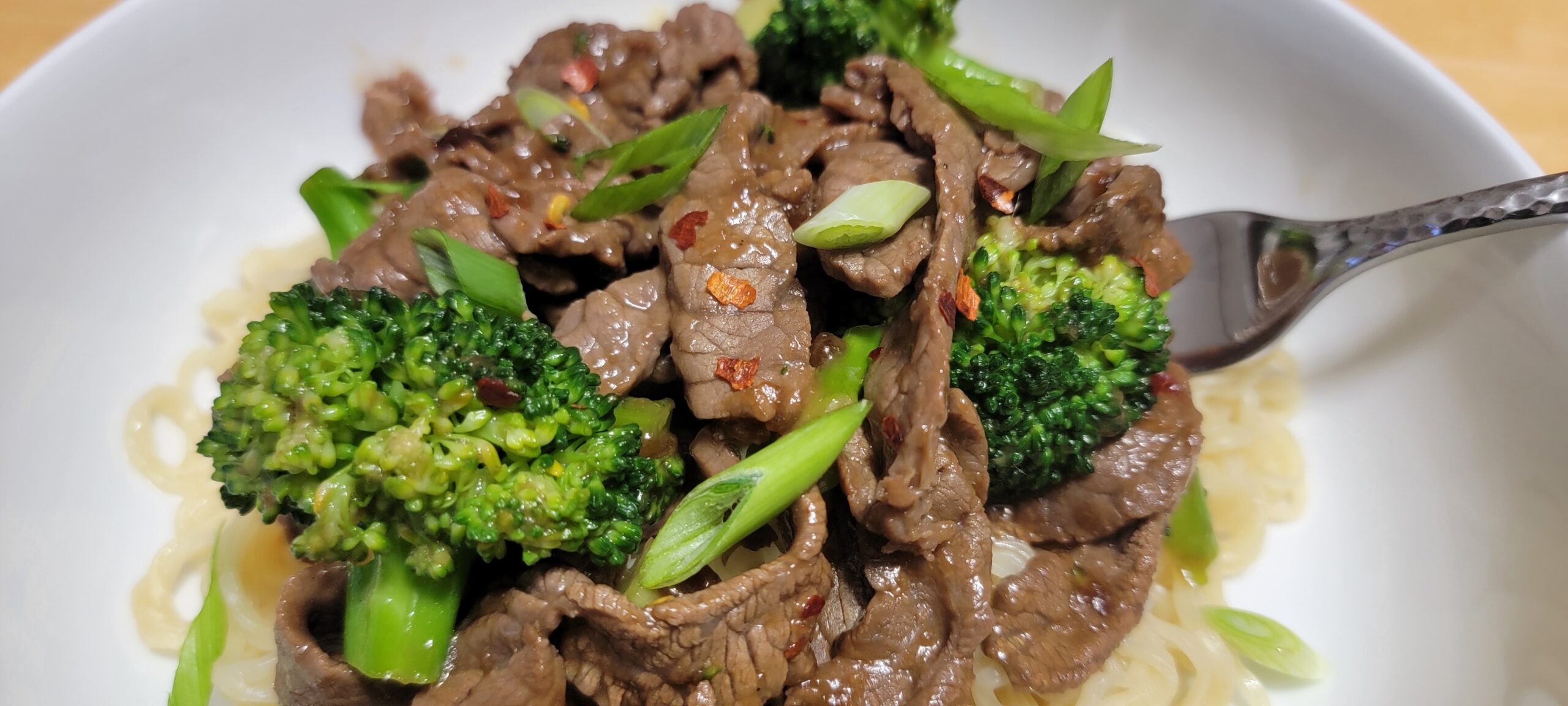
 Easy Make Ahead Breakfast Casserole
Easy Make Ahead Breakfast Casserole 5 Ingredient Easy Mustard Glazed Pork Chops
5 Ingredient Easy Mustard Glazed Pork Chops





